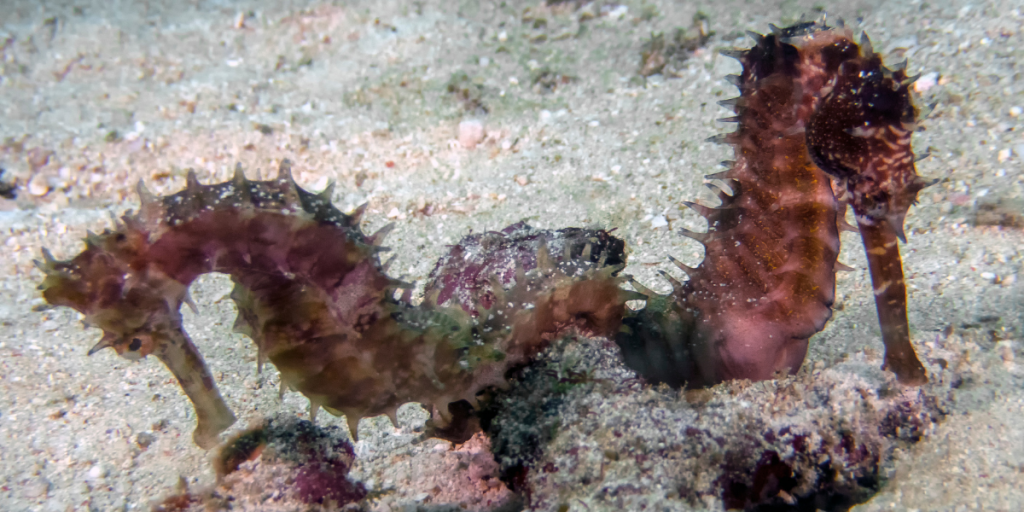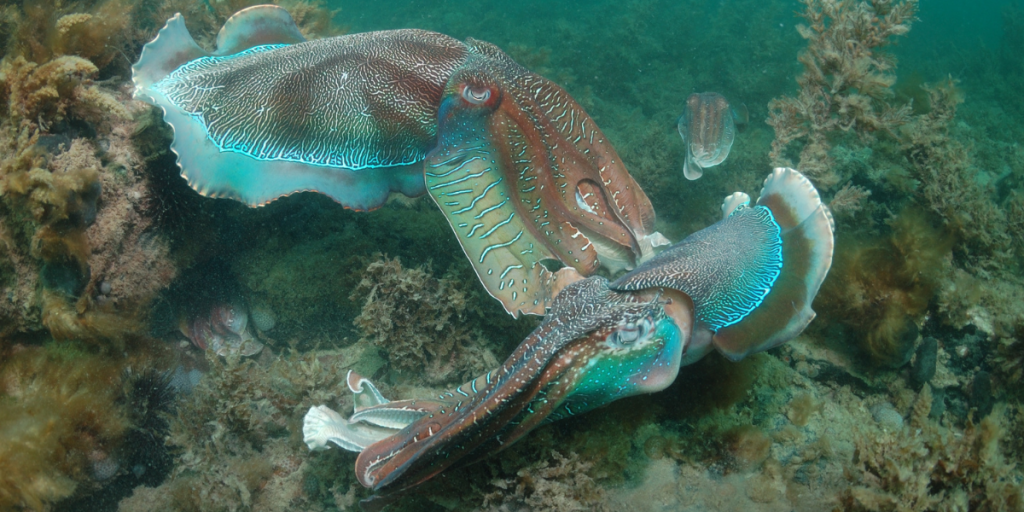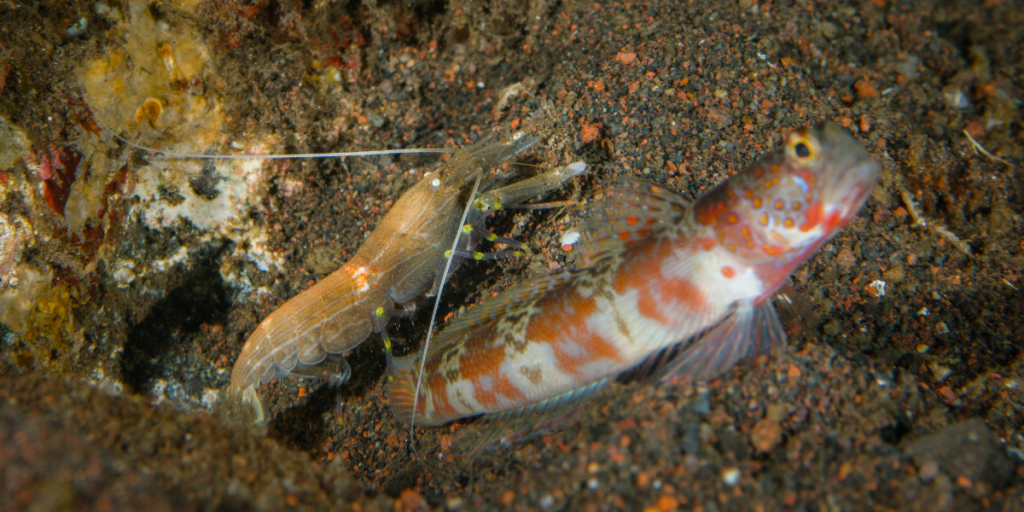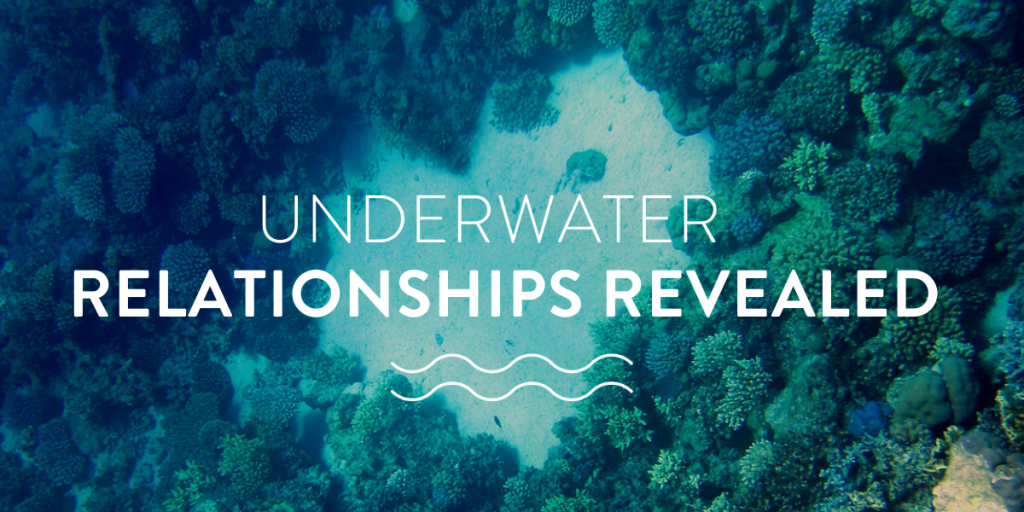As we’re coming up to Valentine’s day, let’s talk underwater relationships! Is the ocean full of soul mates or is there more of a love them and leave them vibe going on????
There are actually many different relationships in the underwater world: From fleeting moments of connection to long term partnerships, some that benefit both parties compared to others where one does all the work. In fact some of the most long lasting underwater relationships are actually friendships / partnerships between different species!
Lets explore a few in more detail here …
1. It is quite uncommon for underwater creatures to mate for life
Seahorses and Mantis shrimp are two of the rare species that mate long term (or at least until something better comes along).
Seahorses:
Most seahorses find it hard to find a mate, they are poor swimmers, are spread out and experts at camouflage! So once they do find each other they tend to stick together, at least for the mating season if not for life.
To strengthen their relationship, a pair of seahorses engage in a daily dancing session. Each morning, they entwine their tails and dance together for several minutes before they start their days. How romantic is that!?

Mantis shrimp:
While mantis shrimp can certainly pack a punch, they do have softer shells than their relations, so being out of their dens is particularly dangerous for them. It seems that this could be one reason they mate long term.
Once they pair up they also move to the outskirts of the reef (or suburbs if you like) to set up house and raise their baby shrimp further away from predators. However, even the ‘burbs aren’t danger free and male shrimps have been know to be lured away by larger single shrimps who have lost their own mates!!
2. Many cephalopods die after mating
For many mating is the end of the line, they have achieved their goal in life so can ‘die happy’ as they say. Some, don’t even get to achieve this goal as females of some species often eat the males before they can finish mating!!!
This had lead to some interesting solutions and adaptations by the males. For example, some deep sea squid attach sperm packets to any other squid (male or female) that they cross paths with before quickly jetting away. Another even more extreme example, is where some species of octopus completely detach their mating arm and give it to the females to avoid getting eaten!
We think one of the most colourful cephalopod mating rituals belongs to the Giant Australian cuttlefish. Do you agree? Such a site to see so many colourful cuttlefish congregating together and posturing to attract and protect mates. Unfortunately it does also culminate with many deaths (and this isn’t a euphemism), but it’s stunning while it lasts …

3. Symbiotic relationships are very common underwater
Firstly, what is symbiosis? It is basically any close relationship between 2 species where at least 1 benefits. There are 3 different types of symbiotic relationships:
Mutualism
This is when both parties gain something from the relationship. The most well recognised example is the clownfish and the anemone (Finding Nemo anyone), but our favourite is the pistol shrimp and goby …

Pistol shrimp are blind, so when they drag mud up to the surface after creating burrows and foraging for food they are very exposed to predators. Enter the goby…they act as a bodyguard wiggling its body to warn the shrimp when a predator comes too close. In return the goby also gets a nice burrow to hide from predators in and a cosy place to keep their eggs in when needed!
Commensalism
In this type of relationship one party benefits over the other, but neither is really harmed. An example of this is barnacles on whales. The whales are not harmed by the barnacles attached to them, but the barnacles greatly benefit by gaining access to more food.
Parasitism
I’m sure we’re all aware that this is not a healthy kind of relationship. One species is taking complete advantage and causing harm to another! For example, the gruesome isopod when it attaches its self to any fish. First eating the tongue of said fish and then getting first dibs on anything the fish tries to consume going forward.
4. Pufferfish create art to court their mates
Male white-spotted pufferfish use their fins to sculpt the sand into a delicate and striking nest made up of concentric circles, working non stop for weeks at a time to complete their creations. They also decorate the rings with bits of shell all to attract a female and provide the perfect spot for her to lay her eggs. The finished structure can be up to 2 meters in diameter, which is very impressive considering the pufferfish are only 10-12cms long themselves!
We hope you enjoyed exploring the world of underwater relationships with us. There are many more fascinating underwater partnerships out there, so get exploring and researching!


